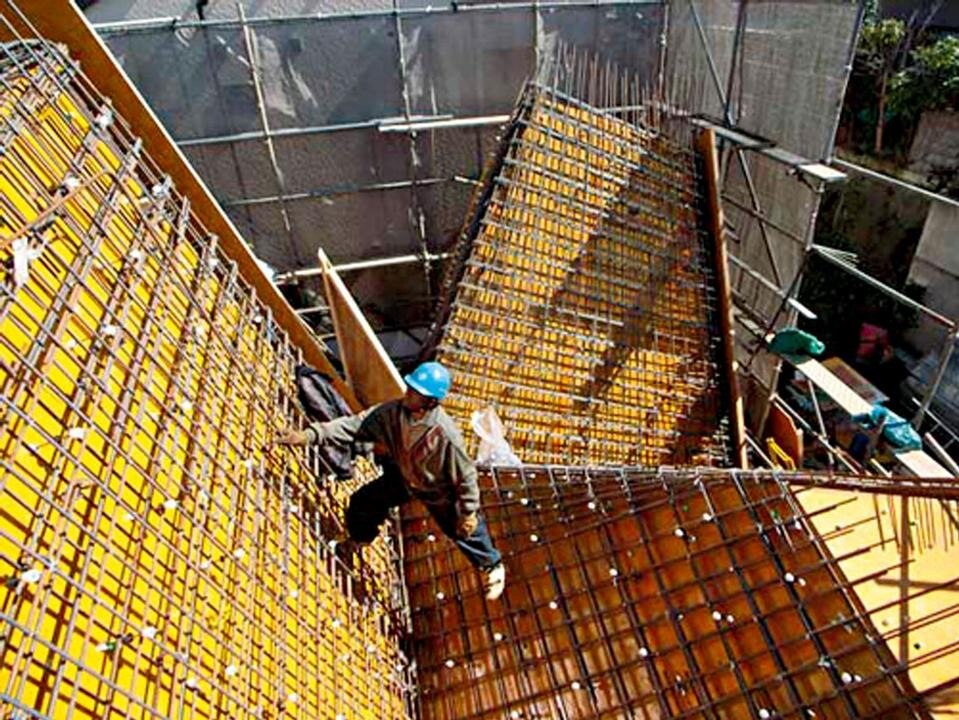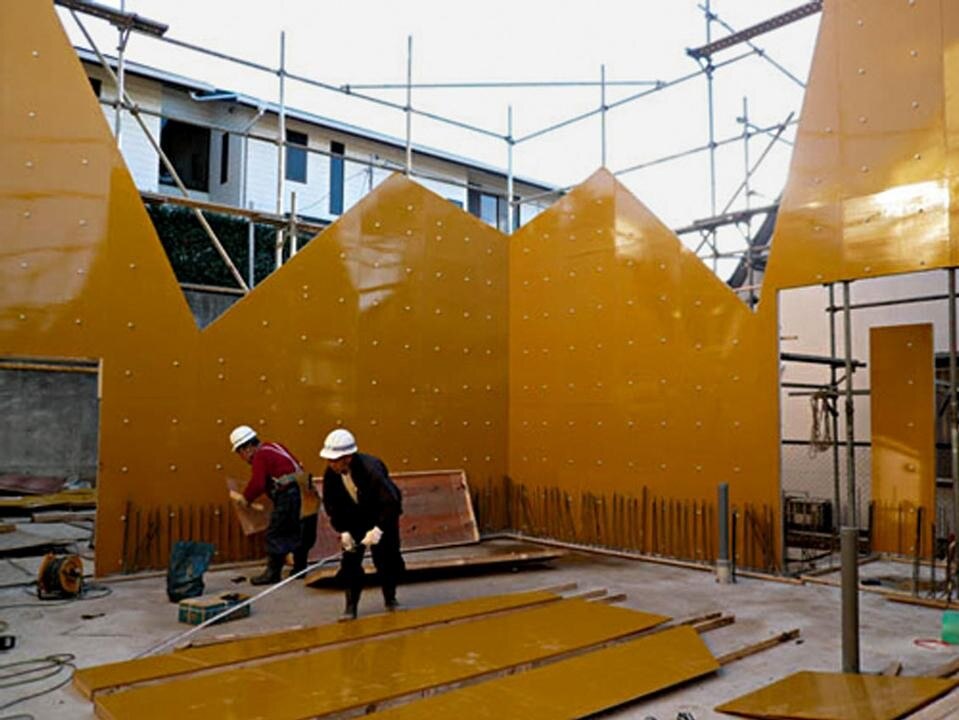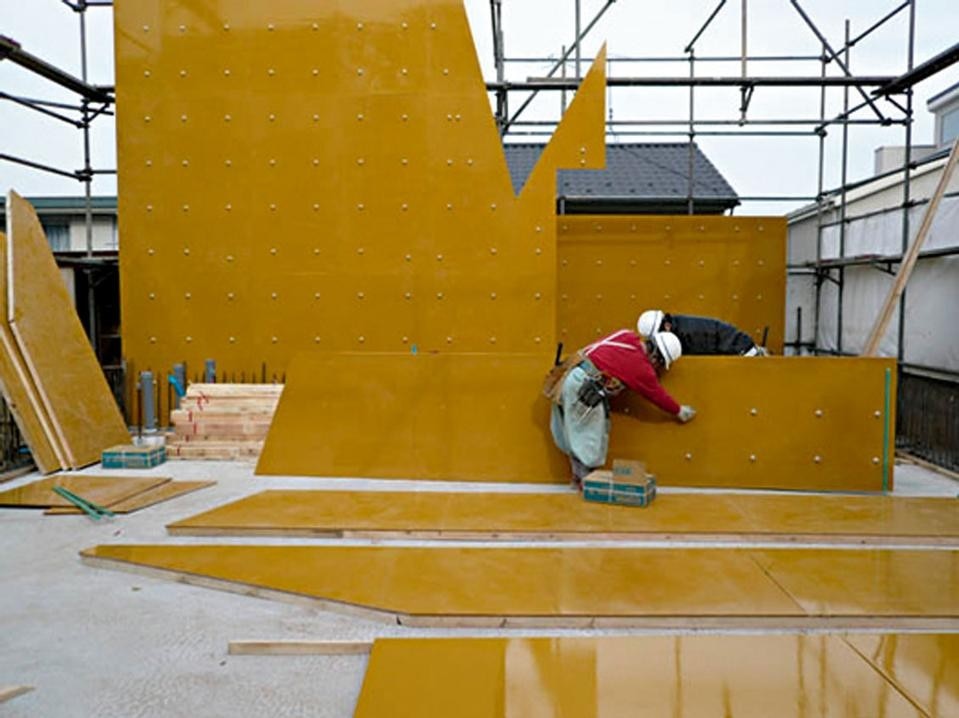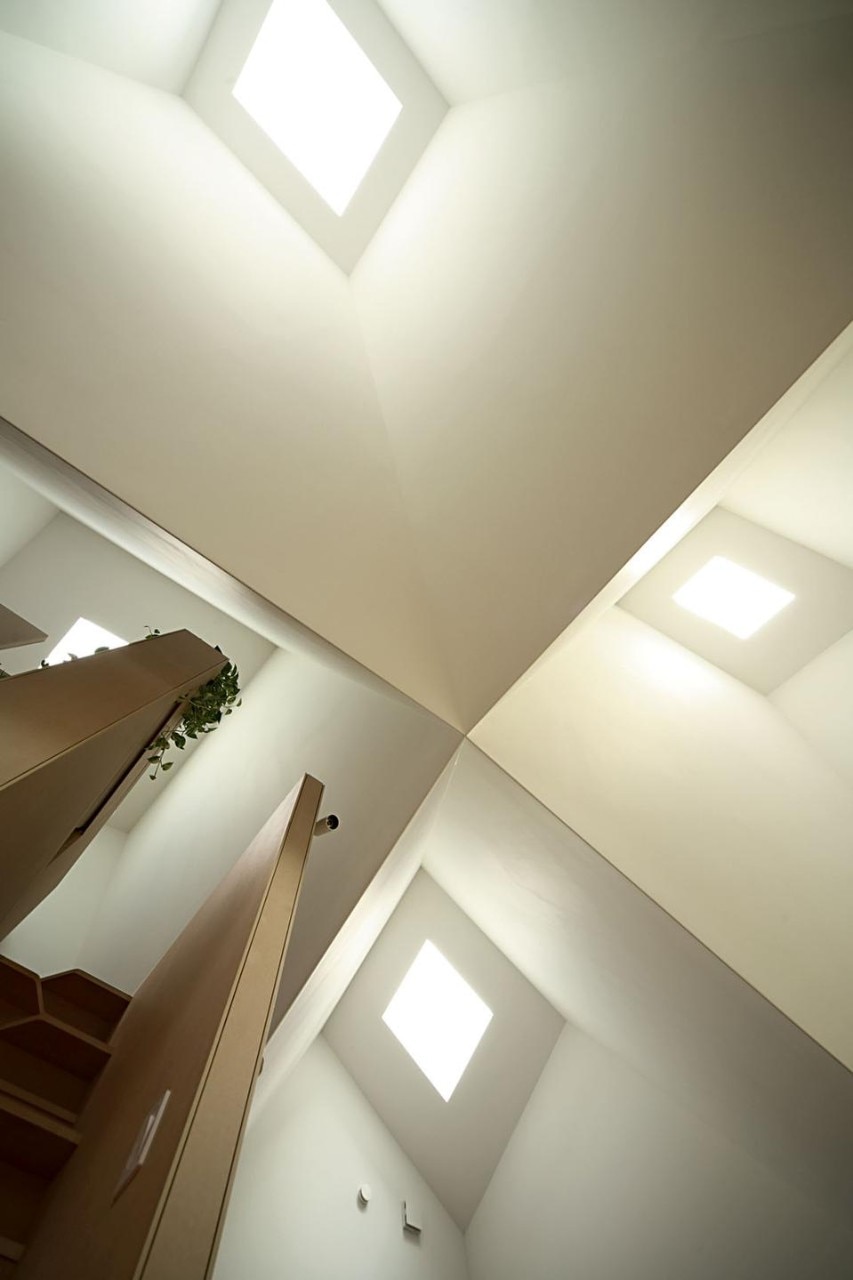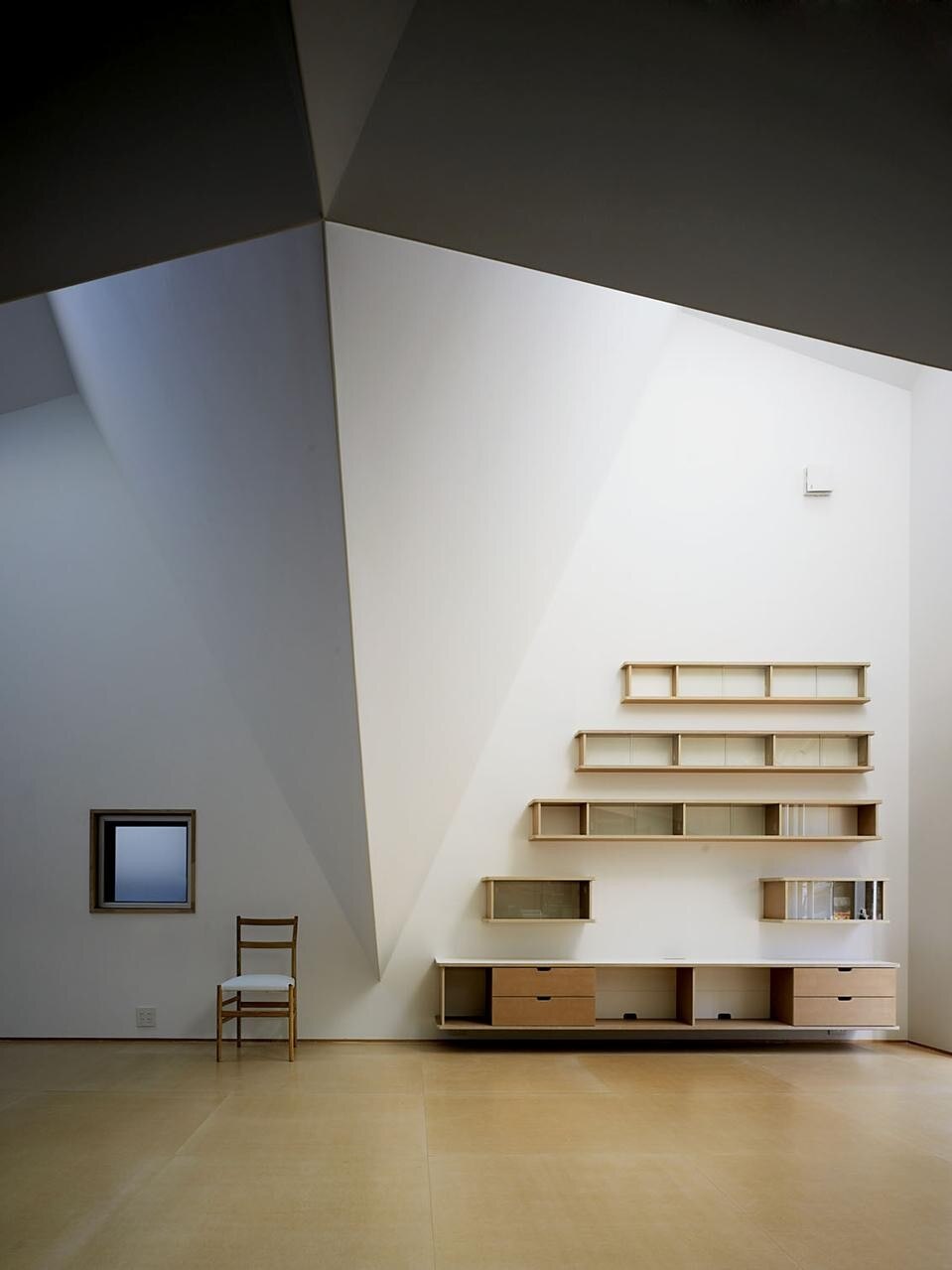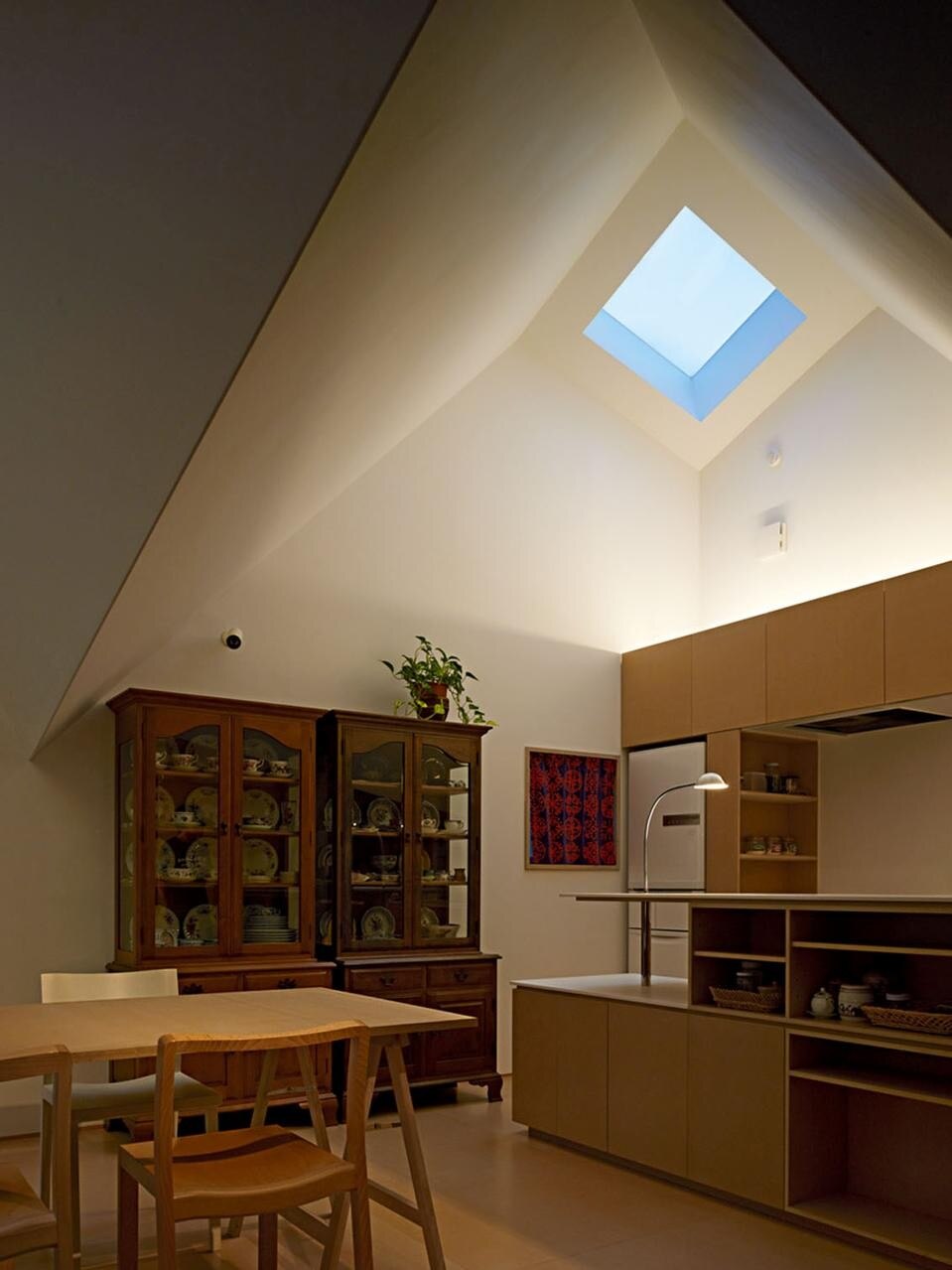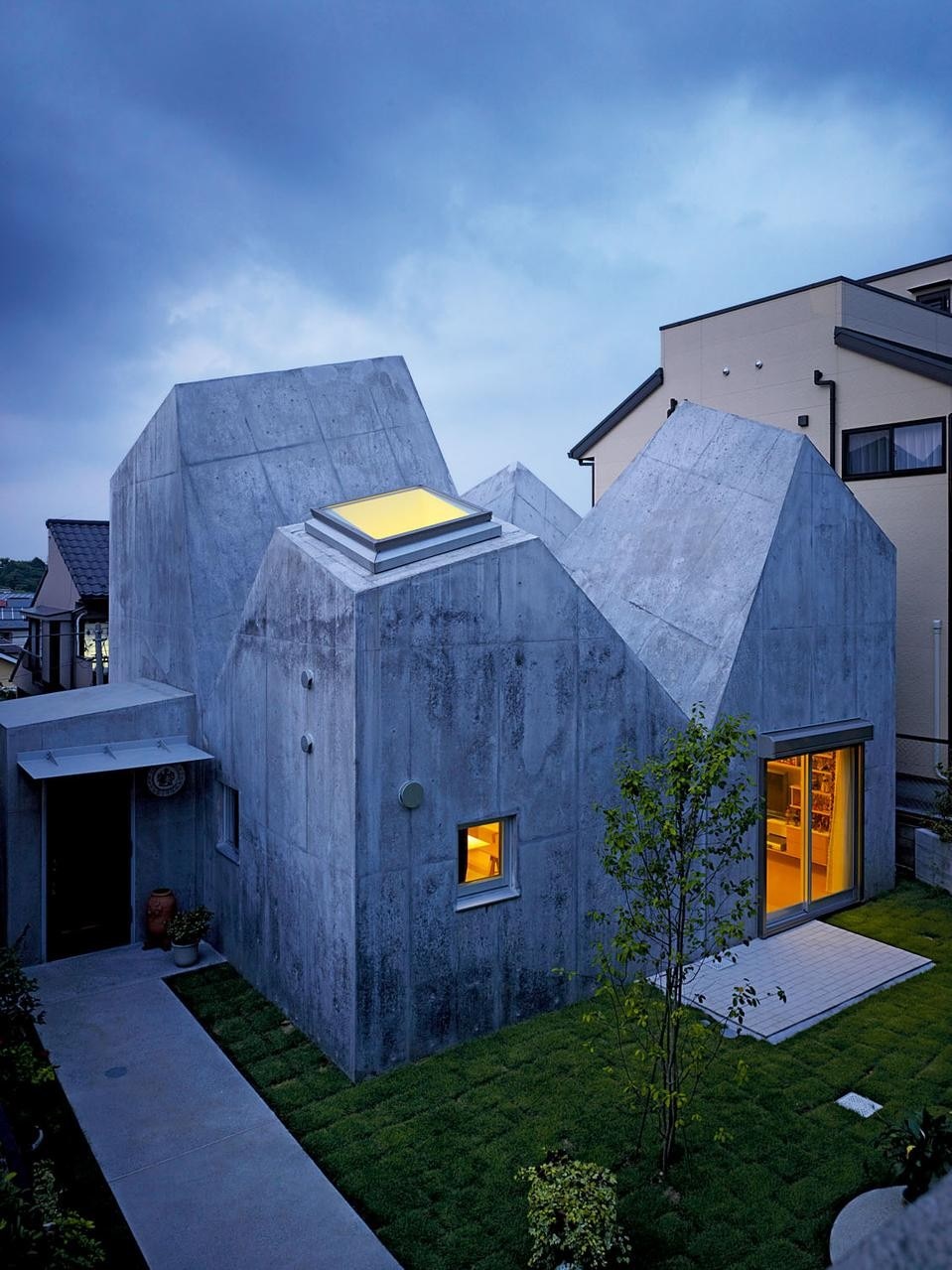The site faces north and the two-storey houses on the adjacent boundaries overlook it from the south perched on rising terrain. As a result, the initial impression was that it would be impossible to capture the light in response to the request made by the clients – a married couple fond of the district – for a house filled with light.
A closer look at the shape of the roof reveals the source of inspiration. The roof design brings to mind the limestone concretions that form when barnacles cling onto and colonise the first stable surface they encounter after drifting at length with the waves. These colonies adopt a roughly coneshaped form with an operculum at the top. They look like small volcanoes, a sort of twisted limestone telescope that captures the light while, at the same time, protecting the nucleus hidden deep inside. Likewise, the protuberances of the Kohoku house’s roof look as if they have been pushed out of the stereometric architecture to capture light and pour it inside, prompting the unusual telescopic window design that averts the intrusion of indiscreet gazes and offers protection from the rain.
“The roof design is unrestrained because the house is on one storey,” say the architects. “By exploiting this freedom, we wanted to see the interior and exterior as opposite sides of a single object. Additionally, the decision to use reinforced concrete for the structure allowed us to capitalise on the design of folds in the roof. In so doing we were also able to eliminate the need for pillars in the interior space.”
The ceiling modulation determined the division of the interior, conceived as a single continuous space that expands and contracts along fold lines running at different heights. So, all over the house the individual family members can perceive the others’ presence despite being visually separated.
The roof fold lines mark the internal layout but it is the internal walls and ceilings, like light chutes, that flood the space with the colours and hues of the changing hours of the day and seasons, recording the passage of time and changing nature. The roof openings also frame patches of sky, creating a space that is removed from its context and projected elsewhere in a rarefied and suspended dimension.
